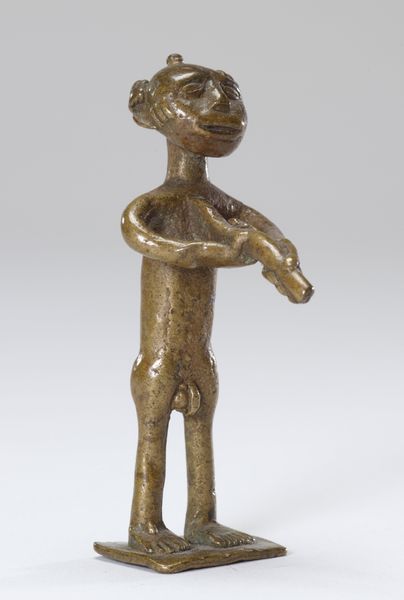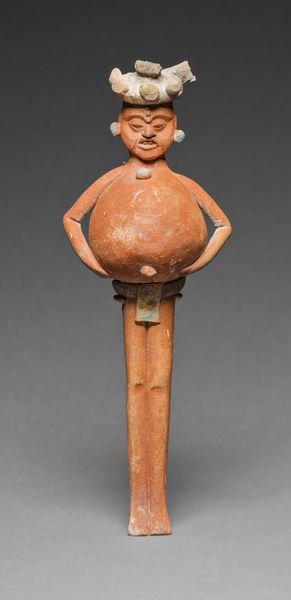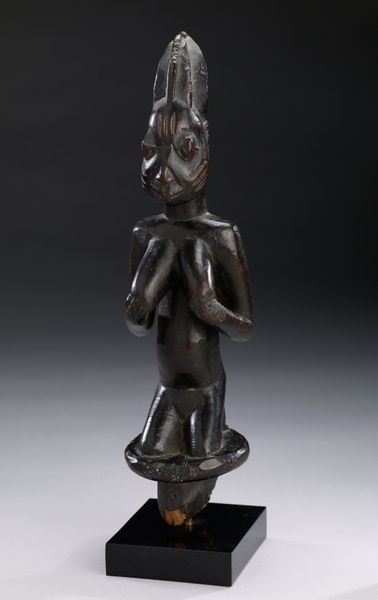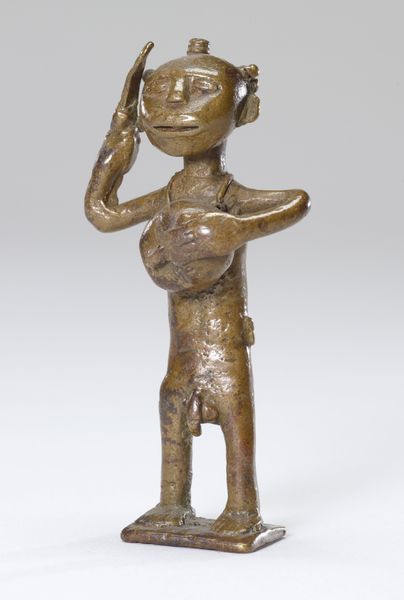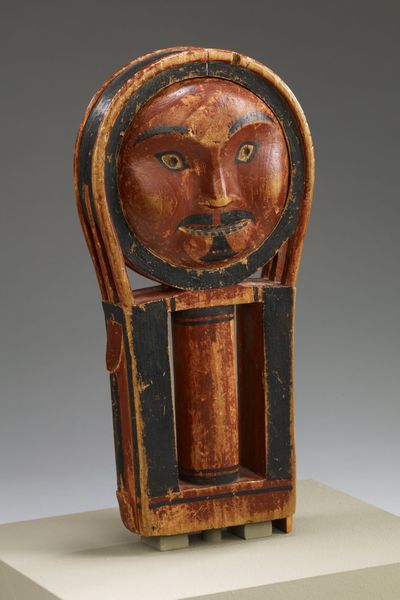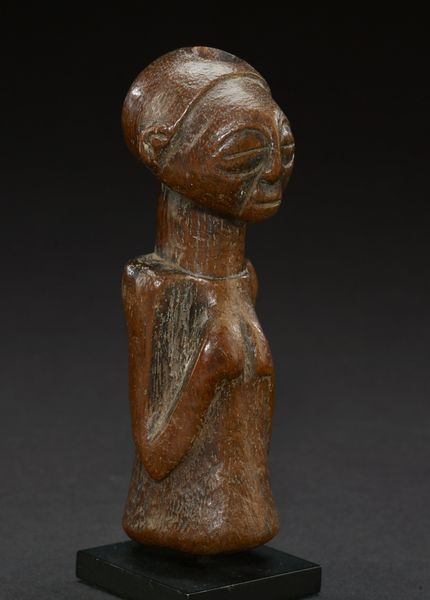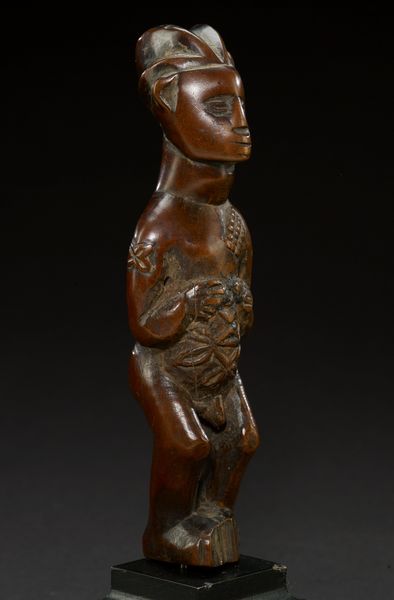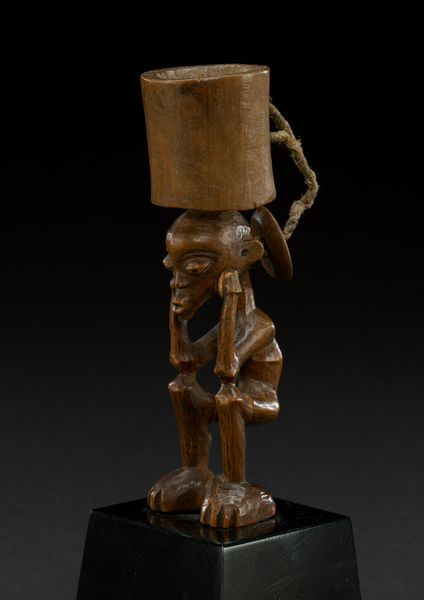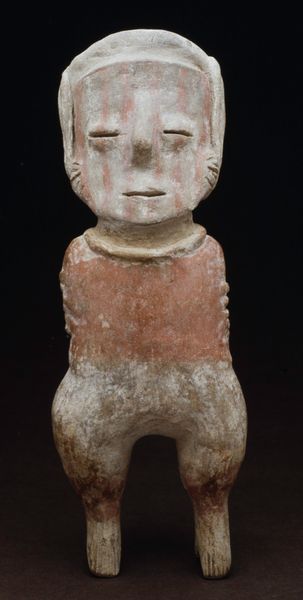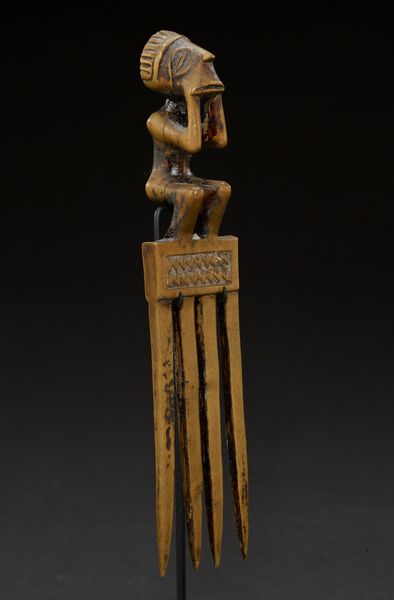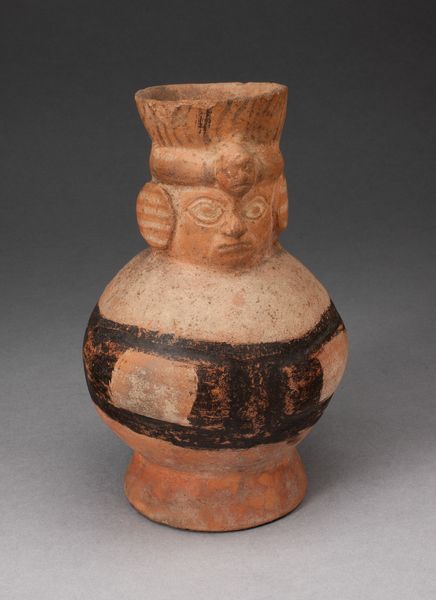
sculpture, wood
#
portrait
#
stone
#
sculpture
#
figuration
#
sculpture
#
wood
Dimensions: 8 3/4 × 2 3/4 × 3 1/4 in. (22.23 × 6.99 × 8.26 cm) (with base)
Copyright: Public Domain
Curator: Looking at this object, I am struck by the elegance in its simplicity. There’s a quietness to the piece. Editor: I feel that! We're standing before a wooden sculpture from the Luba people, likely created around 1920. It's called "Pestle," currently residing here at the Minneapolis Institute of Art. What are your initial reactions to it? Curator: Well, "pestle" feels like a misnomer. It doesn't look functional; it looks totemic. Like some kind of quiet forest god observing us with patient humor. There’s almost something mischievous about the slight smile on those three faces. Editor: The "three faces" aspect really grabs my attention. This polycephalic representation—multiple heads on a single body—could symbolize enhanced power, perception, and the ability to oversee different realms simultaneously. It’s common to see multi-faced figures within Bantu-speaking cultures. It serves as an artistic device to present holistic understandings of the human condition. Curator: Hmm, “holistic”…I was getting a trickster vibe, like one head is plotting something while another is trying to talk it out of it. But I’m willing to think it through again! Maybe each face represents a different stage of life or perspectives on a singular concept. Either way, I adore how smooth and weathered the wood looks, how long it must have taken for the maker to carve and polish it! Editor: Absolutely, that patina hints at significant use and perhaps a deeper ritual significance. Pestles like this one, with their stylized heads, weren't always about grinding grains, were they? They also held roles within initiation rituals, perhaps used to process herbs and medicines. The female form represented could denote womanhood, motherhood, life. Curator: I am so glad you mentioned the femininity of this representation; there is indeed a distinctly female appearance, in my opinion, to the three faces above the cylindrical support. And I imagine this carving feels incredibly weighty. The balance between the realistic rendering of the faces with the abstraction of the body is so wonderful to observe. Editor: Exactly. Placing it within the frame of societal power, you begin to read this object through intersectional frames of value, culture, identity. Its display here really urges audiences to reframe art historical scholarship, asking if existing conventions meet the richness and the diversity of artistic practices and intentions, then, and now. Curator: This has me wanting to visit the forests of Congo—maybe this little pestle contains the key! Editor: A truly profound reflection, as is the object of inspiration. Thank you.
Comments
No comments
Be the first to comment and join the conversation on the ultimate creative platform.
